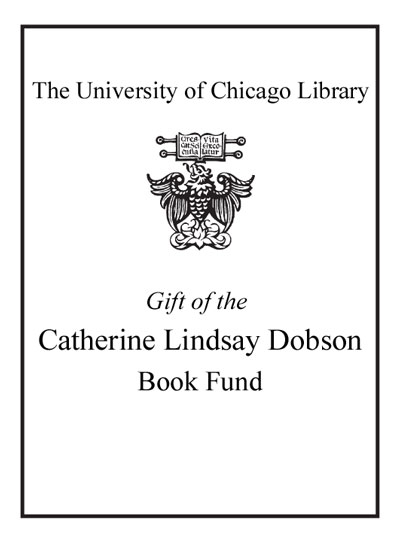The forgotten kingdom : the archaeology and history of Northern Israel /
Saved in:
| Author / Creator: | Finkelstein, Israel. |
|---|---|
| Imprint: | Atlanta : Society of Biblical Literature, [2013] |
| Description: | xii, 197 pages ; 23 cm. |
| Language: | English |
| Series: | Ancient Near East monographs ; Number 5 Ancient Near East monographs ; v. 5. |
| Subject: | |
| Format: | Print Book |
| URL for this record: | http://pi.lib.uchicago.edu/1001/cat/bib/9789664 |
Table of Contents:
- Acknowledgments
- Abbreviations
- Introduction: Why a Book on the Northern Kingdom?
- 1. Historiography and Historical Memory
- 2. Recent Advances in Archaeology
- 3. The Personal Perspective
- 1. Setting the Stage: The Shechem Polity of the Late Bronze Age and the Final Days of the Canaanite City-States in the Late Iron I
- 1.1. The Late Bronze Age
- 1.1.1. The Shechem Polity in the Amarna Period
- 1.1.2. The End of the Late Bronze Age
- 1.2. The Iron Age I
- 1.2.1. The Highlands
- 1.2.2. The Lowlands
- 2. The First North Israelite Territorial Entity: The Gibeon/Gibeah Polity and the House of Saul
- 2.1. The Gibeon-Bethel Plateau
- 2.2. Sheshonq I and the Highlands North of Jerusalem
- 2.3. Excursus: The Land of Benjamin: North or South?
- 2.4. Sheshonq I, the Saulide Territory, and Archaeology
- 2.5. Preservation of Early Memories in Samuel: The Case of Shiloh
- 2.6. The Date and Territorial Extent of the Saulide Polity
- 2.6.1. Dating Saul and the Saulides
- 2.6.2. The Territory of the Saulides
- 2.7. Philistines or Egyptians?
- 3. The Early Days of the Northern Kingdom: The Tirzah Polity
- 3.1. Relative Dates, Absolute Dates, and Historicity
- 3.2. Note on Material Culture
- 3.3. Tirzah
- 3.3.1. The Site, Its Excavation, and Its Stratigraphy
- 3.3.2. Excavation Results
- 3.3.3. Discussion
- 3.4. The Territory Ruled by the Tirzah Polity
- 3.4.1. Dan
- 3.4.2. Ben-Hadad
- 3.4.3. What Does Archaeology Say?
- 3.4.4. Sheshonq I and the Jezreel Valley
- 3.4.5. West and East
- 3.5. Highlands-Based Expanding Early Territorial Polity
- 3.6. The Rise of Jeroboam I
- 3.7. Tirzah and Jerusalem
- The Northern Kingdom under the Omride Dynasty
- 4.1. Omride Architecture
- 4.1.1. Samaria
- 4.1.2. Jezreel
- 4.1.3. Hazor
- 4.1.4. Jahaz and Ataroth in Moab
- 4.1.5. Tell er-Rumeith in the Gilead
- 4.1.6. Other Sites
- 4.1.7. Summary: Characteristics of Omride Architecture
- 4.2. The Territory Ruled by the Omrides
- 4.3. Demographic Composition of the Omride Kingdom
- 4.4. Economic Resources of the Omrides
- 4.5. Writing
- 4.6. Cult
- 5. The Final Century of the Northern Kingdom
- 5.1. Hazael's Assaults on the Northern Kingdom
- 5.1.1. Four Late Iron IIA Destruction Horizons in the North
- 5.1.2. The Textual Evidence
- 5.2. Hazael's New Order
- 5.3. Dan and Bethsaida
- 5.4. Israel's Swan Song
- 5.4.1. Territorial Expansion
- 5.4.2. Economic Prosperity
- 5.4.3. Reorganization of Cult
- 5.4.4. Advance of Writing and Compilation of Northern Texts
- 6. Comments on the Two "Charter Myths" of the Northern Kingdom
- 6.1. The Reality behind the Core of the Jacob Cycle
- 6.2. The Origin and Development of the Exodus and Wandering Tradition
- 6.3. Summary
- 7. The End and Beyond: A New Meaning for "Israel"
- 7.1. Israelites in Judah after the Fall of the Northern Kingdom
- 7.2. The Rise of the Concept of Biblical Israel
- Concluding Remarks: Long-Term History versus the Uniqueness of Israel
- 1. It's All about Timing
- 2. Long-Term History
- 3. Israel and Judah
- Works Cited
- Index of Place Names
- Index of Personal Names

